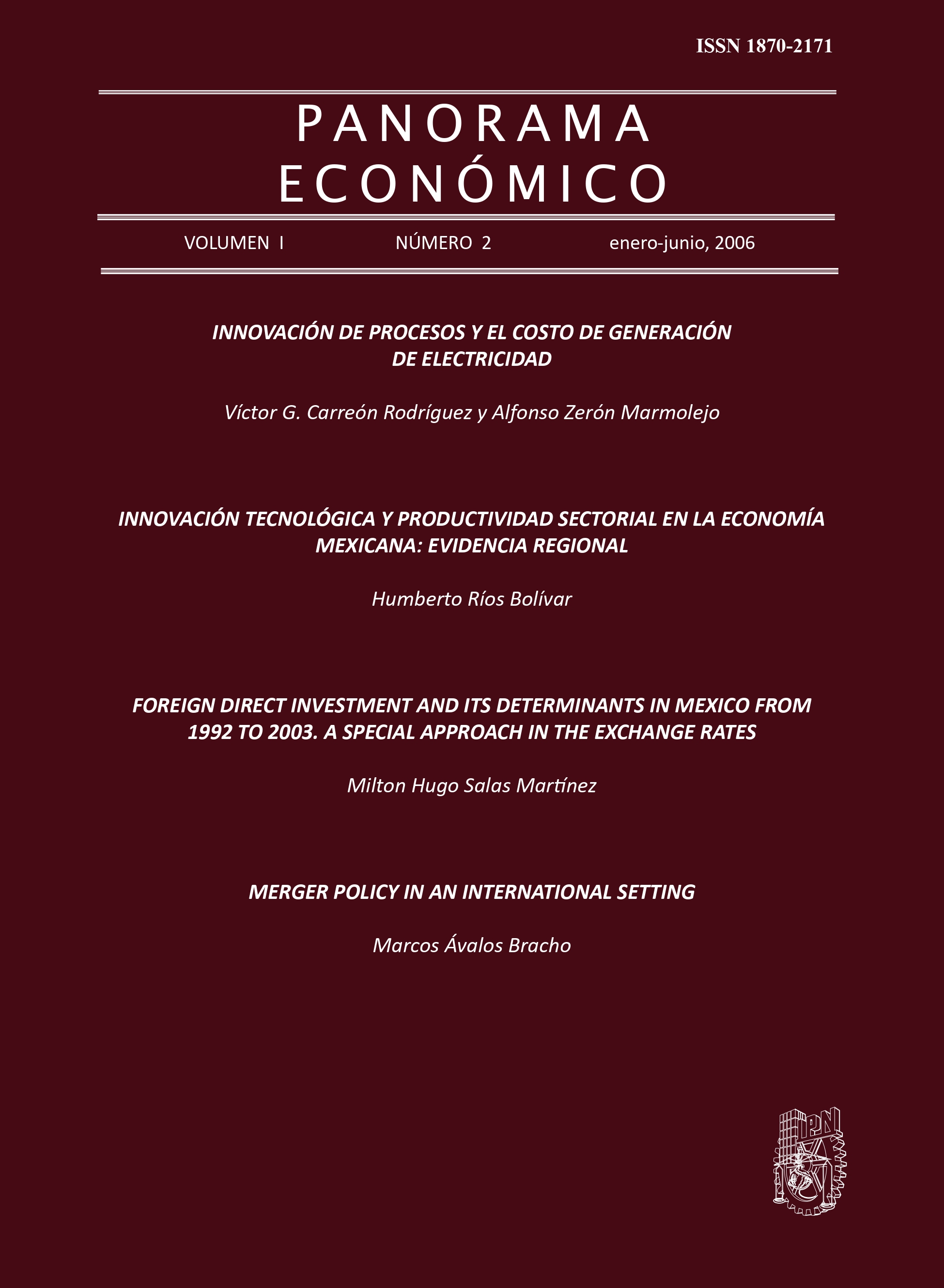Merger Policy In An International Setting
Contenido principal del artículo
This paper is about the interaction between trade policy and narrow but important aspect of competition policy, namely merger policy. We focus on one key issue: mergers with international dimension. We introduce a one-market model of international trade policy under imperfect competition. We study the effects of domestic and foreign mergers on the domestic country’s optimal trade policy and on domestic and foreign welfare when the domestic country pursues its optimal trade policy. By implementing three antitrust rules, we determine the ‘conflict’ and ‘blocking’ zones for mergers. Later on, we discuss the effects of trade liberalization on merger policy. By comparing the free trade case to the trade policy case, we assess whether trade liberalization leads to tougher or lenient merger policies.
Auquier, A.A. and Caves, R.E. (1979) “Monopolistic Export Industries, Trade Taxes, and Optimal Competition Policy”. Economic Journal 89, 559-81.
Barros, P.P. and Cabral, L.M.B. (1994) “Merger Policy in Open Economics”. European Economic Review 38, 1041-1055.
Brander, J. and Krugman, P. (1983) “A ‘Reciprocal Dumping’ Model of International Trade”. Journal of International Economics 15, 313-321.
Brander, J.A. and Spencer, B.J. (1984) “Trade Welfare: Tariffs and Cartels”. Journal of International Economics 16, 227-242.
Brander, J.A. and Spencer, B.J. (1985) “Export Subsidies and International Market Share Rivalry”. Journal of International Economics 18, 83-100.
Bulow, J.I., Geanakoplos, J.D. and Klemperer Paul D. (1985) “Multimarket Oligopoly: Strategic Substitutes and Complements”. Journal of Political Economy 93, 488-511.
Collie, D.R. (1991) “Export Subsidies and Countervailing Tariffs”. Journal of International Economics 31, 309-324.
Collie, D.R. (1992) “International Trade and Cournot Equilibrium: Existence, Uniqueness and Comparatives Statics”. Bulletin of Economic Research 44 , 55-56.
Collie, D.R. (1997) “Mergers and Trade Policy under Oligopoly”. Centre for Economic Policy Research.
Dixit, A.K. (1984) “International Trade Policy for Oligopolistic Industries”. Economic Journal 94, 1-16.
Dixit, A.K. (1988) “Antidumping and Countervailing Duties under Oligopoly”. European Economic Review 32, 55-68.
Farrell, J. and Shapiro, C. (1990) “Horizontal Mergers: An Equilibrium Analysis”. American Economic Review 80, 107-126.
Head, K. and Ries, J. (1997) “International Mergers and Welfare Under Decentralized Competition Policy”. Canadian Journal of Economics XXX, 1104-1123.
Horn H. and Levinsohn J. (2001) “Merger Policies and Trade Liberalization”. Economic Journal 111, 244-276.
Kabiraj, T. and Chaudhuri, M. (1999) “On the Welfare Analysis of a Cross-Border Merger”. The Journal of International Trade & Economic Development 8, 195-207.
Levinsohn, J. (1996) “Competition Policy and International Trade”. In: Bhagwati, J. and Hudec, R.E., (Eds.) Fair Trade and Harmonization: Prerequisites for Free Trade? Volumen One: Economic Analysis, 1st edn. Cambridge, MA: MIT Press, Cambridge, MA.
Nikaido, H. (1968) Convex Structures and Economic Theory, edn. USA, New York: Academic Press, New York.
Ordover, J. and Willig, R. (1986) “Perspectives on Mergers and World Competition”. In: Grieson, R., (Ed.) Antitrust and Regulation, 1st edn. pp. 210-18. Lexington Mass.: Heath, Lexington Books.
Rysman, M. (20001) “Competition Policy as Strategic Trade”. Working Paper, Department of Economics, Boston University.
Salant, S.W., Switzer, S. and Reynolds, R.J. (1983) “Losses from Horizontal Merger: The Effects of an Exogenous Change in Industry Structure on Cournot-Nash Equilibrium”. Quarterly Journal of Economics 98, 185-199.
Detalles del artículo

Esta obra está bajo una licencia internacional Creative Commons Atribución-NoComercial-SinDerivadas 4.0.







